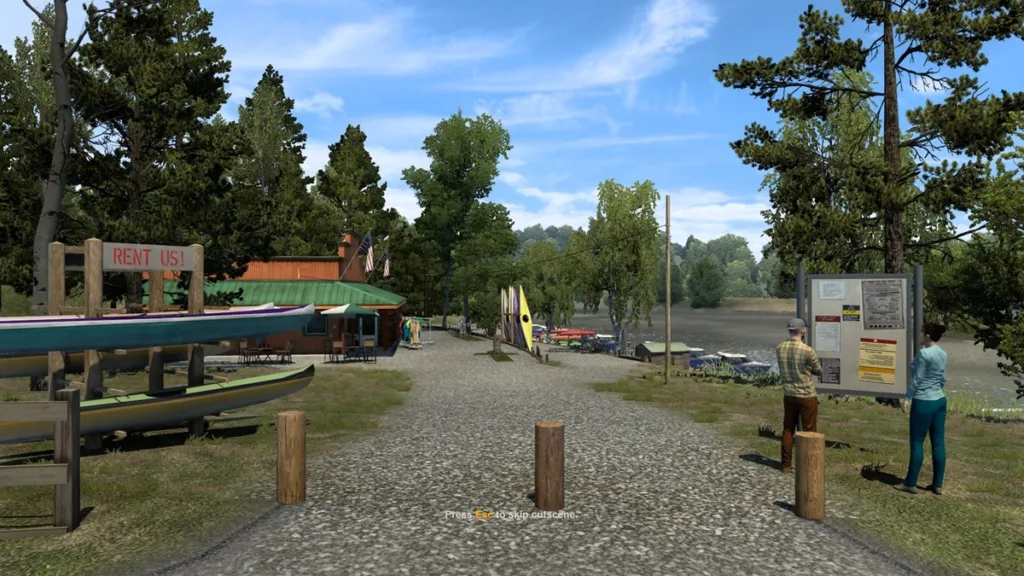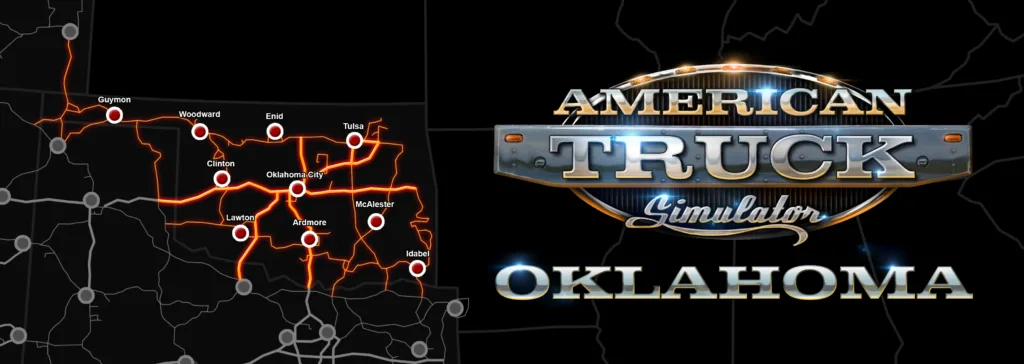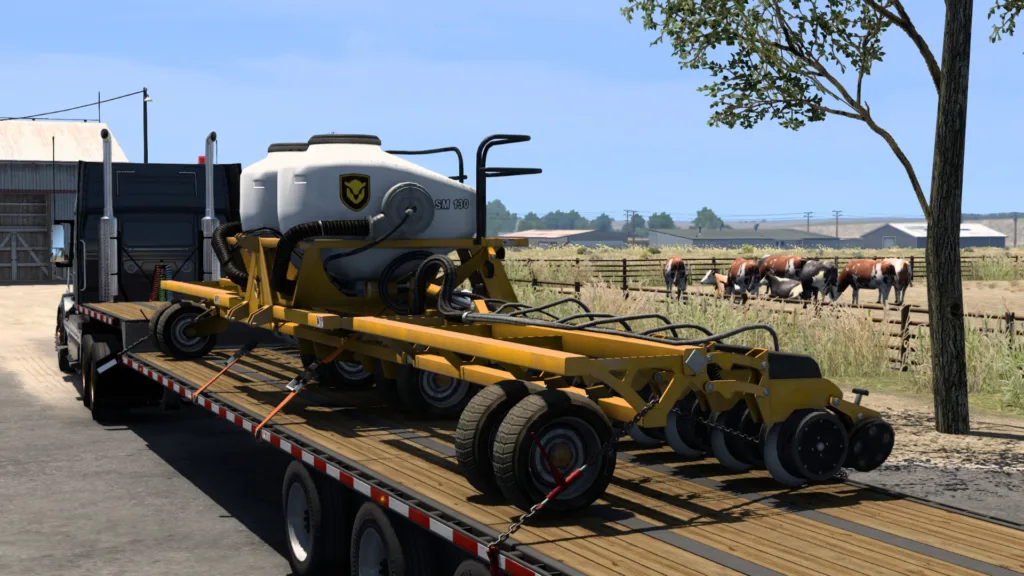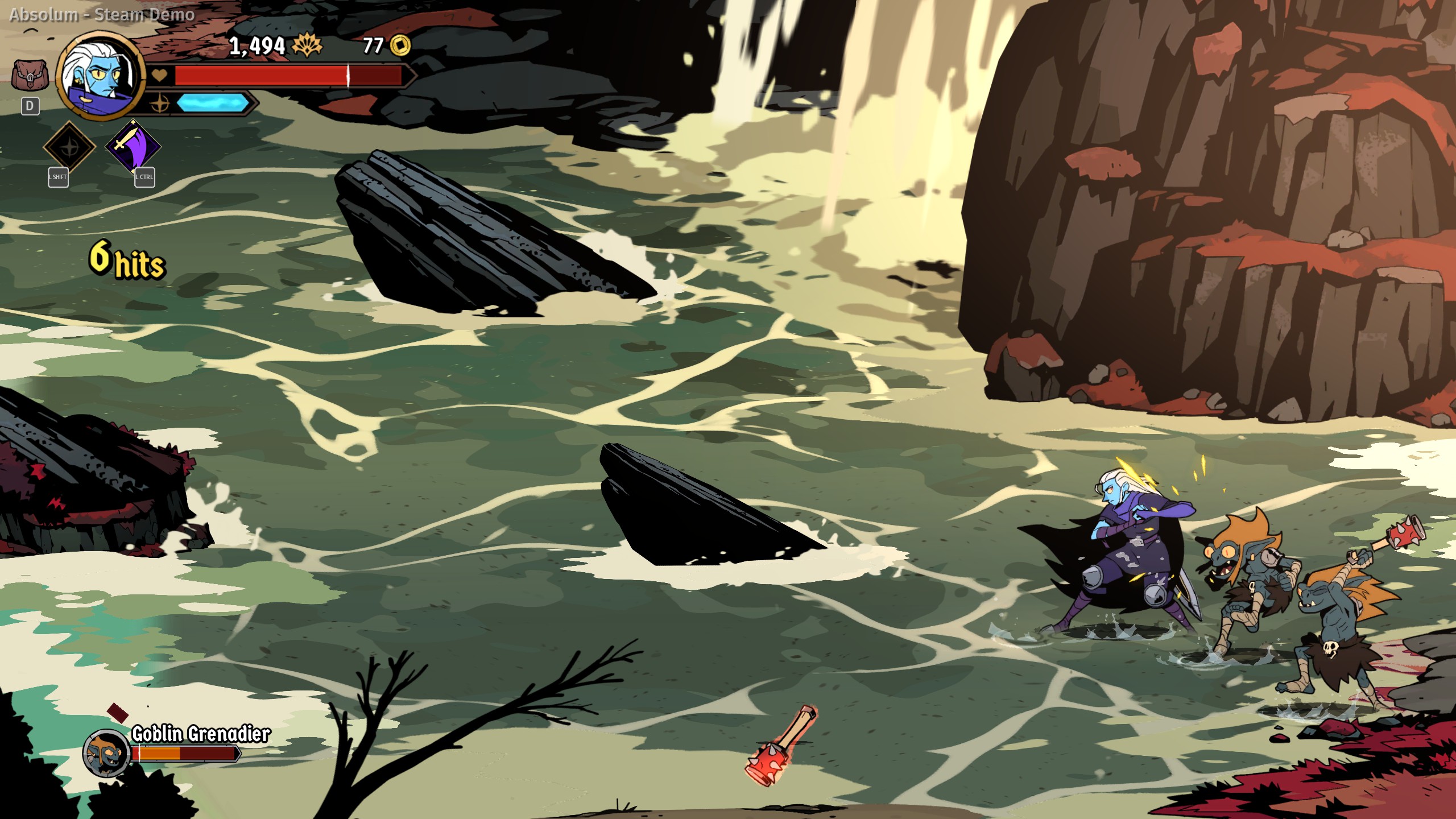SCS Software’s Euro Truck Simulator 2 is 11 years old and its sister-sim, American Truck Simulator, is seven. Indeed, both of these sims have been around the block quite a few times. Within this timespan, both sims have seen a litany of improvements in terms of new content, features and even minor game engine revamps, making them far more robust than their initial releases.
Even with all the continuous work that SCS has been putting in, there are still some areas in which these sims are lacking. Additionally, other studios have released their own driving sims in the last few years that sport some features that make SCS’ projects look a little archaic. Here’s a few key upgrades that would greatly benefit both American Truck Simulator and Euro Truck Simulator 2.
The following “wishlist” isn’t in any particular order. Some features would be easier to implement than others, as well as some are more applicable than others, and will be noted accordingly.
1.) Enhanced interactivity
SCS has built very detailed truck models for both American Truck Simulator and Euro Truck Simulator 2; in partnership with the real-world manufacturers, even. Both inside and out, these models are amazing representations of their real-world counterparts. As great as they are to merely gawk at, it’d be nice to actually get a feel for them and their features.
True, the driving mechanics in both sims are solid. But, it’d certainly add to the level of gameplay depth if players could also fiddle around in the one place they spend the most time in-game: the truck cabin. The level of visual detail in each cabin is exceptionally high, yet the switches, buttons and knobs are not interactive.

Other, more modern vehicular sims such as Bus Simulator (Stillalive Studios), Microsoft Flight Simulator (Asobo Studios) and Train Sim World (Dovetail Games) do offer the ability to fully interact with cabin elements.
On the other hand, the most that SCS has done in recent times is add in the ability for players to roll down the windows. As commendable of a feature this is, it’s done by means of simple a keystroke rather than actually pressing the button inside the cabin. How neat would it be to have the ability to do simple things like change the radio station, turn on the A/C, and adjust the lights, all by means of cabin interactivity?
In a similar vein, other operations such as filling the truck with fuel, washing the truck body and connecting the trailer lines would all be interesting to do by means of being freed from the shackles of the cabin and getting to actually use your virtual legs, preferably in a first-person view.

Such FPV gameplay is nothing new in the sim space, yet SCS’ projects remain as one of the few sim titles of today that completely forego such functionality.
2.) Exploring maps on-foot
Having brought up the topic of on-foot functionality, such a feature would also be great for simply exploring the highly-detailed maps across both sims.
With each new ATS/ETS2 map expansion, SCS’ scenery designers show off their talents more and more. It’s easy to see just how much effort is put into making each area across both American Truck Simulator and Euro Truck Simulator 2 look and feel like the real-world locales they’re meant to represent.
In modern map expansions across both sims, there is so much extra detail poured into relatively minor set pieces like storefronts, residential areas, and so on.

By stopping and panning the camera around, it’s easy to see special extras, including animals and people milling about, along with scenery vehicles and machinery operating.
With such care and attention put into these obscure details, it’s a shame that so much of it gets more-or-less overlooked, since all of the gameplay action is focused on simply driving.
True, these are truck driving simulators. But, other vehicular sims handle a variety of operations rather well. One great example is that of the Farming Simulator series from Giants Software.
Giants has long allowed players to get out of their machinery and roam around the map in a first-person view. This method of gameplay has become more encouraged in recent entries by means of having core gameplay functionality, such as animal husbandry, handled by means of a mix of on-foot FPV gameplay and machinery gameplay. Giants has even implemented the fun little side quest of finding hidden collectibles that are almost exclusively discovered by means of exploring on-foot.
With that in mind, not only would the ability to have a similar mix of gameplay elements in SCS’ truck sims allow players to really appreciate all the work that goes into the scenery design of each map, but it would also add another layer of depth/ Bonus points if the idea of hidden rewards is also shamelessly copied.
3.) More realistic and dynamic truck functionality
One of my own personal pet-peeves about SCS’ twin truck sims is just how ‘sterile’ the experience is when it comes to owning your truck. Seeing that it’s your one-and-only real connection to these in-game worlds, you’d think the trucks would look and feel more ‘lived in.’
A brand-spanking new pair of shoes will eventually get creased, scuffed and blemished. Likewise, anyone who’s had the privilege of owning a new (or mostly-new) vehicle begrudgingly knows that their precious new ride will eventually be tainted by the effects of the world it operates in.
Be it from weather, to road grime, to a random rock chip that dings the windshield—that ‘showroom shine’ won’t last forever (unless you’re one of those folks who polishes your vehicle daily and then leaves it in a garage).

Despite this common fact of life, apparently in both American Truck Simulator and Euro Truck Simulator 2, humanity has discovered how to keep vehicles in a consistently immaculate state. Thus, you can own the same truck throughout dozens of hours of gameplay, having driven it up and down across several hundred in-game miles, but it will look and operate just as did when it was first purchased.
Games have long been able to simulate the effects of vehicular damage, both in terms of cosmetics and functionality.
As it relates to simulators, some go the extra mile by incorporating random mechanical failures and gradual damage accumulation. Racing sims are especially notorious for having tire wear, fuel consumption, as well as simulating the change in vehicle handling due to damaged parts.
It would certainly add to the depth of gameplay if SCS’ sims also incorporated such features. Truck manufacturers may very well forbid the studio from showing any heavy damage to their designs (fun fact: this applies to the likes of racing games too). But, at the very least some dirt and grime accumulation would be great to see, with perhaps some light scuffs and scratches after a collision.
As mentioned earlier, washing off that dirt could be an added facet of gameplay. And, what if when you’re thundering down the highway, one of your tires suddenly blows out?
This is a very common occurrence in the real-world trucking industry, after all, so having such random failures in-game would heighten the player’s need to pay consistent attention.

Sure, tire wear is somewhat featured in each of the two sims, but the current implementation has the depth of a bottle cap. As it stands, one quick trip to any repair shop and the problems are all magically fixed at the press of a button.
The only way to get your truck to respond in any sort of erratic way is by repeatedly banging it up, which will eventually cause the engine to randomly seize. But, again, the representation of damage isn’t anything special; there’s not even any smoke bellowing from under the hood, or anything like that.
Even the trucks that have smoke stacks don’t blow any exhaust smoke when under load; another relatively common sight in older models. SCS, let us get these big rigs at least a little dinged and dirty, even just to show how hard they work as they traverse across hundreds of miles of road.
And, what if we weren’t driving only on regular roads?
4.) Harrowing journeys
Over a decade ago, back when SCS was best-known for the 18 Wheels of Steel franchise (the predecessor to ATS/ETS2,) the studio experimented with a different style of gameplay for its trucking titles. This came in the form of 2011’s 18 Wheels of Steel Extreme Trucker and its sequel.
As the name suggests, both of these titles focused on having players take part in more challenging missions that would have them operating big rigs in more treacherous situations. This included missions such as traversing dangerous ice roads that could break, winding serpentines in the mountains with narrow road width, off-road paths and more.
Such a style was quite different than past 18WoS titles, which are more akin to American Truck Simulator and Euro Truck Simulator 2 by featuring standard, point A-B delivery jobs across an open map. The Extreme Trucker duology was a great experimentation with a more hard-knock experience, which is why it’s a shame it was all left behind right there.
Despite both modern SCS sims being leaps and bounds more advanced than the 18WoS titles, this more visceral gameplay style has yet to make a return in any sort of way.
The more advanced tech of ATS/ETS2 would do wonders for such complex gameplay, perhaps somewhat mirroring that of what Saber Interactive has done with the MudRunner and SnowRunner titles.
There are only a handful of on-the-road modifiers in American Truck Simulator and Euro Truck Simulator 2 that currently adds any sort of real challenge to a given delivery. The most common is that of ‘random road events’ which always just amount to vehicular incidents that then require road closures, thus forcing the player to take a detour. There are also a handful of (often hidden) off-road paths to traverse, but not to any meaningful degree.
Finally, there are the Special Transport missions seeing you take exceptionally large loads from point A to B, with the need of having a powerful truck and following the instructions of escort vehicles. These missions do offer a nice twist compared to usual delivery jobs, but are few and far between.
5.) Making the world feel more alive
Having now brought up the lost ‘hardcore’ mechanics of 18 Wheels of Steel Extreme Trucker, one more point that game honed in on that the modern SCS sims don’t is that of challenging weather conditions. In both ATS/ETS2, there is a dynamic weather system in place. Players can use a slider to determine how often the weather will change. However, this only amounts to generating showers and thunderstorms.
While the dynamic weather does offer a change in terms of reduced visibility, it’s never to any major degree. On that note, the driving mechanics don’t change much at all in wet conditions. This is, of course, very different than the real-world.
In reality, wet roads require operating at slower speeds to account for longer braking distances. Not to mention that sometimes roads can become flooded, to the point where they should be avoided.
Such conditions would make for far more technically complex journeys in American Truck Simulator and Euro Truck Simulator 2, and would up the skill ceiling by a bit in a dynamic fashion. Just like in the real-world, the player would have to employ different driving styles and maneuvers as they encounter different conditions.

Even beyond just thunderstorms, there’s also the matter of snow storms and dust storms. American Truck Simulator, in particular, would benefit from having a more varied amount of weather events.
The continental USA is unique with the fact it’s home to just about every atmospheric and geographical condition that could be experienced on the planet. These conditions vary from coast to coast and region to region. Towering dust storms, bitter-cold blizzards, powerful tropical systems, and severe thunderstorms that spawn hail and tornadoes—the US literally does have it all.
Of course, the continent of Europe is also home to a lot of the same extreme weather hazards, depending on the region. Thus, across both American Truck Simulator and Euro Truck Simulator 2, a truly dynamic weather system that accounts for all these different conditions would not only be appropriate, but would add a striking visual change and completely switch up the gameplay.
Even better would be having the AI traffic’s behavior also respond to the change in conditions, such as skidding on ice, or hydroplaning in severe rain storms.
What if your truck also responded to the change in conditions? Perhaps during a heatwave, one would have to monitor the temperature gauge for fear of overheating. Or, how about trying to keep the engine from seizing up in extremely low temperatures?

Even if the mechanics didn’t go this far, just having these varied conditions would be a big upgrade from just the simple passing showers that are present now.
On that note, seasonal changes would also play a big factor here. Parts of the US experience the effects of every season to a great degree, as do parts of Europe Thus, as the maps of both American Truck Simulator and Euro Truck Simulator 2 continues to get filled out, all of these variables would be a wonderful inclusion to go alongside future expansions.
Just imagine the autumn foliage while roaming through New England in ATS, or braving the cold of deep winter in Siberia in ETS2?
6.) Social features and UI upgrades
Another throwback to the classic 18 Wheels of Steel titles involves that of communication between the player and other virtual drivers.
In some of the later entries of that past series, the player was able to talk to virtual drivers over a radio frequency. This involved getting info such as weather and traffic reports.
Both American Truck Simulator and Euro Truck Simulator 2, despite giving you the ability to own your own trucking company and hire drivers, offer no way to communicate with them at all. Back in 18WoS, radio communication merely involved selecting options from a menu. Yet, not even such a seemingly rudimentary feature has been reintroduced to the two modern sims.

A more modern take of such functionality could be to at least send a quick text or two to other drivers, be it within your own company or perhaps even those you pass on the road. Imaginably, this feature could go as far as creating a fictional trucker-centric social network where the player could interact with not just other real-world players, but virtual AI drivers too.
Buying and selling used trucks/parts on a service similar to Facebook Marketplace, sharing photos/videos of drives, recommending scenic routes—these are all just a few examples of where this concept could be taken.
Seeing that such a feature would call for having a virtual smart device, another neat function could involve viewing fully detailed satellite maps of the game world. The current maps in both ATS/ETS2 are serviceable, but the lack of detail is not only boring, but even makes differentiating between each region (whether different states or different countries) a little more difficult.

Maps in open-world titles have long been very detailed and multi-functional, so the fact that SCS’ two modern sims sport such a basic UI is nothing more than a missed opportunity on the studio’s part, especially considering the fact that these are representative of real-world locations.
Incorporating more road emblems and topography details would be greatly beneficial. Even better, labelling key landmarks such as lakes, rivers, and bridges as they’re represented in-game would help with navigation and even just curiosity for those of us who love map hunting.
To throw it back to the suggestion of varying weather conditions, this virtual smart device would also be quite useful if it included a weather forecast app, perhaps even a ‘live’ radar function that could help with route planning.
What if in American Truck Simulator, you picked up a job in California that would have you deliver some goods to Dallas, Texas. You’d have to drive through Arizona and New Mexico, but then you see there’s a chance for a big dust storm along that route. So, rather you take a longer, but safer northern route that’ll instead take you through Nevada, Utah, Colorado and Oklahoma?
Such interactivity and complexity is leaps and bounds beyond what’s currently on offer in the sim, where the most one has to worry about during any drive is just filling up and taking rest stops.
7.) Bonus: Picking up smaller jobs in pickup/utility trucks
While it’s true the whole focus of both sims is on piloting semitrucks, it’d be nice to ditch the heavy haulers for something more compact from time to time.

Smaller jobs like moving a yacht by means of a pickup truck, or even taking furniture across state lines in a U-Haul would be a great way to change up the gameplay experience every-so-often.
Not to mention that sometimes it would just be nice to explore the gorgeous world of both sims in something smaller and therefore easier to maneuver around scenic areas.
Counter: what about mods?
Some of the proposed features I’ve mentioned here, along with several others, do already happen to be a part of mod packages across both American Truck Simulator and Euro Truck Simulator.
Seasons, more dynamic traffic, intricate driving mechanics, a variety of different vehicles, and even entire map extensions are all currently accessible by means of several mods.
While this is all great and certainly quite impressive, it’s not a watertight solution.
The primary caveat is that a player must go out of their way to find and download these mods. The integrated Steam Workshop and in-game Mod Manager in both sims helps streamline this process quite a bit. But, admittedly, therein comes other issues, like compatibility.

Not only do some mods not play nice with one another, each time the base sim is updated, any given mod is at risk of breaking.
While popular ones are often fixed with each update, should a mod become abandoned but still be desired by the player, it could eventually become too old/buggy to be of use.
This is why having such features would be beneficial at the base level of both American Truck Simulator and Euro Truck Simulator 2. Completely painless for the user, and enjoyable by all simultaneously.
How likely is any of this?
American Truck Simulator and Euro Truck Simulator 2 are both interesting in the fact that they’ve completely dominated SCS’ workflow for quite some time now.
This studio used to release entirely new titles every few years, with each one iterating over the last. But, ever since the arrival of ATS/ETS2, the studio’s business model has moved to simply iterating on these core sims themselves.
While they are separate projects, they’re also very much tied together at the foundation, as they each share features and functionality. They’re essentially two sides of the same coin, hence is why a version update for one results in a subsequent update for the other.
Support for each sim has pretty much been funded by the continued creation of new map expansions, all of which have been fairly priced. Meanwhile, big improvements to the core sim have arrived by means of continuous free updates that release every so often.

One of the biggest changes in recent years has been that of a lighting system upgrade for the graphics engine, and the long-awaited arrival of an official multiplayer mode. Of course, all of these enhancements have been well received by the fanbase.
While this entire strategy has been working, there’s still no denying that these sims continue to show their age with each passing year.
For all of the improvements SCS has made and continues to make, looking at the visual fidelity and feature complexity of other sims that have been released in the last few years, (SnowRunner, Bus Simulator and Train Sim World, for example) it’s easy to see that ATS/ETS2 are still rather dated.
Considering both sims are running on a relatively grizzled engine, this isn’t all too surprising.

Admittedly then, some of the proposed improvements in this American Truck Simulator/Euro Truck Simulator 2 wishlist may not be even possible using the existing engine.
But, this then begs the question as to why SCS simply hasn’t moved these sims to a newer, more advanced engine.
Such a feat almost definitely falls into the category of “easier said than done.” While there are a variety of titles that have done such an operation in the past, it still would require a major overhaul of the sims’ code to ensure a smooth transition.
Then again, there’s also the possibility of upgrading the engine itself, but that’s yet another complex and perhaps rather costly endeavour.

Having considered these options, it seems that perhaps SCS has kind of backed itself into a corner.
Since it’s been improving and growing both American Truck Simulator and Euro Truck Simulator 2 for such a long time, releasing a big, new, next-gen trucking sim anytime in the near future would likely create disdain among the existing fanbases.
So, as long as the studio sticks with the dated tech powering these sims, then perhaps players will just have to continue to settle with the modest offerings.
Nevertheless, should such upgrades like the ones mentioned here ever come to fruition, they would only serve to make American Truck Simulator and Euro Truck Simulator 2 all the better. They’re already good driving sims, but there’s still a lot of potential in the tank to make them great.
Check out more sim content:
Microsoft Flight Simulator 2024 is starting to make sense to me | SnowRunner shows off contents of its Season 10 pack | Cities Skylines II raises skyward on October 24




